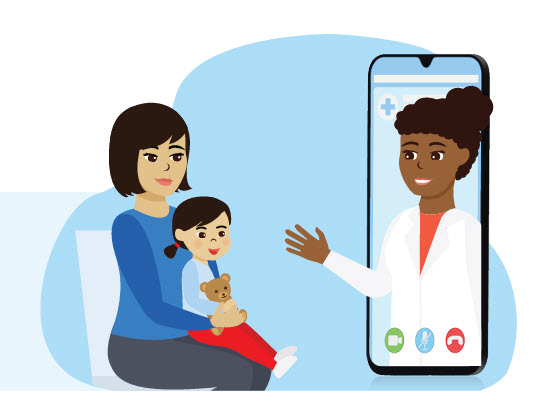Telehealth — an all-encompassing term referring to use of technology to provide medical care at a distance — can take several forms, including direct care to a patient via audiovisual connection (direct-to-consumer care, telemedicine), in-home monitoring of physiologic and other parameters (remote patient monitoring) or from one health care facility to another (interfacility telehealth).
Through the COVID-19 pandemic, telehealth has demonstrated improved access to both cardiac care and other non-cardiac services for congenital heart disease patients and families. This has improved efficiencies in care delivery, enabled advances in patient-centered education and improved both provider and patient satisfaction.
People living with Congenital Heart Disease (CHD) deserve access to coordinated and personalized health care. The integration of digital health into a model that provides continual, integrated care for patients — including both in-person and virtual care as appropriate — is essential.
Efficacy and Effectiveness: the ability of care, at its best, to improve health.
Opportunities
- During the COVID-19 pandemic, telehealth has prevented interruptions in care after CHD interventions and has allowed ongoing management of chronic conditions.
- Providers now have increased access to patients including those in rural areas.
Pitfalls
- Decreased access to care persists for those who do not have internet access or technology available to use telehealth.
- Insurance rules and provider licenses may not allow care to cross state lines.
Efficiency and Optimality: the ability to obtain the greatest health improvement at the lowest cost.
Opportunities
- Increases flexibility, provider satisfaction.
- Improves access to specialty care.
- Streamlining may reduce costs to state and health care systems.
- Decreases no-show rates.
- Saves travel costs to doctors’ offices.
Pitfalls
- Not optimal for all visits, particularly post-operative assessments.
Acceptability: conformity to patient preferences regarding accessibility, the patient-practitioner relation, the amenities, the effects of care, and the cost of care.
Opportunities
- Acceptability to providers improving.
- Increases education for families/patients to highlight the unique contribution of telehealth to continuity and care.
- Enhances future iterations of telehealth to increase patient-centeredness by incorporating patient preferences and values.
Pitfalls
- Patients may assume virtual visits are similar to a phone call; therefore, do not require payment.
- Some data exists that families may prefer pediatric subspecialty visits in person.
Legitimacy and Equity: the ability to access health care regardless of social determinants of health.
Opportunities
- Increases access/ease for those with barriers related to geography, transportation, childcare and/or dependent care.
Pitfalls
- Access to technology and the internet or technological literacy may widen disparities.
- Patients may not want others seeing their living conditions.
Next Steps and Opportunities to Improve Health Outcomes through Telehealth
- Data collection to enable simultaneous evaluation of health outcomes and economic impact.
- Improve access to care for rural and underserved communities.
- Support/enhance training needs for providers.
- Legislative work to facilitate telehealth for healthcare delivery, even post pandemic.
The telehealth fact sheet is an output of the Congenital Heart Public Health Consortium (CHPHC); it was supported by the Centers for Disease Control and Prevention of the U.S. Department of Health and Human Services (HHS). The contents of the fact sheet are solely the responsibility of the CHPHC and do not necessarily represent the official views of, nor an endorsement by the member organizations of the CHPHC, CDC/HHS, or the U.S. Government.
Last Updated
09/09/2024
Source
American Academy of Pediatrics

